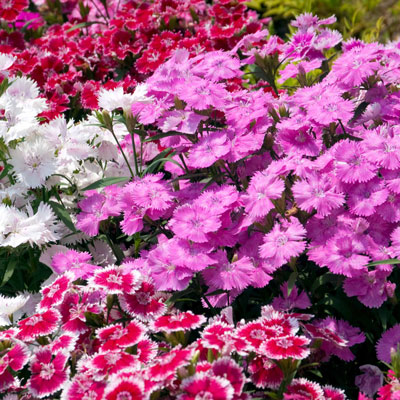Companions for Pansies

Contrary to what you might have imagined, pinks get their name from the way their petals look – as if they’ve been trimmed with pinking shears. In reality, they’re actually sister plants to our longtime favorites, florist carnations.
Plant breeders have worked for years to bring us new types of pinks in shades of red, pink, white and lavender, both in solid colors and banded. Their flowers are single or semi-double (referring to number of petals), and most have the same delightful clove-like aroma as carnations. Mature plants grow to be 6 to 10 inches tall and wide.
Plant pinks in raised beds that have been amended with several inches of peat, compost, bark and rotted manure (along with 1 inch of expanded shale in native clay soils). They need full or nearly full sun to bloom to their best potential. High-nitrogen fertilizers will result in the best production of flowers.
Pinks are also excellent plants for large, decorative pots. Combine them with snapdragons, pansies, violas and sweet alyssum, and you’ll have a lovely display.
It’s also been my observation that pinks are probably not the preferred food of rabbits. That’s a decided advantage over pansies, which rabbits love, if the furry critters are running rampant in your neighborhood.
Oh, and if you thought that pinks look like the familiar sweet Williams your grandma grew, you’re absolutely correct. That’s another, taller species of dianthus, and the similarities of flowers and fragrance are no mere coincidence.

